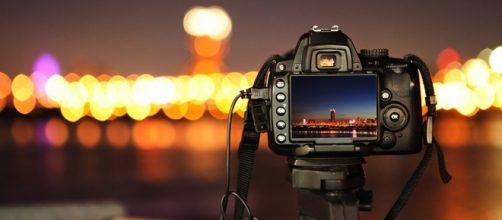Using a Dslr without prior knowledge can be overwhelming and confusing. Don't fret, this article will incorporate the basic components to help you understand your camera better and get you to take beautiful photographs in no time. While turning the knob to the 'Auto' function works fine, there are certain circumstances where taking photographs on auto mode could have a bland result. This article will highlight three basic, but extremely important, components that every amateur photographer should know; aperture, ISO, and shutter speed.
Aperture
The definition of aperture is a space through which light passes in an optical or photographic instrument, especially the variable opening by which light enters a camera.
Basically, the larger the aperture, the more light can pass through. Aperture is measured in "f-stops" to describe the size of the aperture.
The confusing part is that a larger f-stop represents a smaller aperture, and a smaller f-stop represents a larger aperture - yeah, it makes me uncomfortable too. F-stops are numerical which means that f/1.4 is larger than f/8; takes a while to get used to but once you're familiarized with it, you should be able to determine which f-stop is suitable for various situations.
Aperture also has a direct correlation to the depth of field, which is the distance between the nearest and the furthest objects in a scene that appear acceptably sharp in an image. For example, an aperture of f/32 will allow you to focus on all the objects in the foreground and background while an aperture f/1.4 will isolate the foreground from the background by making the foreground objects sharp and leave the background in a blur.
The minimum and maximum f-stop number varies on the type of lens you own so keep that in mind.
ISO
ISO stands for International Standards Organization which determines the sensitivity of the sensor in your camera which will affect the exposure of your photos.Having a standard of sensitivity is crucial as it will allow you to shoot the same ISO on different cameras and remain the exposure value. The component in your camera that is able to change sensitivity is known as "image sensor" or "sensor". This component is crucial as it is responsible for gathering light and transforming whatever you capture into an image. As sensitivity increase, the camera sensor is able to capture photographs in low-light environments without a flash.
However, it will add grain or "noise" onto the images.
It is recommended to use the base ISO which is typically 100 or 200 depending on the type of camera you're using to ensure the highest quality of an image.The increment in value is in geometric progression so a typical ISO sequence is: 100, 200, 400, 800, 1600, 3200, 6400, and more. An important note to take is that each number doubles the sensitivity of the sensor which means ISO 200 is two times more sensitive than ISO 100, ISO 400 is two times more sensitive than ISO 200, and ISO 1600 is sixteen times more sensitive than ISO 100. So, do the math! When the sensor is sixteen times more sensitive to light, it indicates that the camera takes sixteen times less to capture an image.
Shutter Speed
Shutter speed is the time for which a shutter is open at a given setting. The shutter speed is responsible by freezing action or blurring motion, think sport events or to create a "ghostly" effect. It is also known as "exposure time" which pretty much means the length of time whereby the camera shutter is open to expose light into the camera sensor.
Shutter Speeds are measured in seconds or fractions of a second so it would be 1s, 1/2s, 1/4s, 1/250s, 1/ 500s, etc. Changing the shutter speed one step faster (from 1/2s to 1/4s), it is referred to as "increasing shutter speed by one step" and halves the amount of time the shutter is open. If you're changing the shutter speed one step slower (from 1/250s to 1/125s), it is referred to as "slowing shutter speed by one step" thus doubling the amount of time the shutter is open.
There is a lot to cover when it comes to shutter speeds but I'm only covering the surface and you can break in deeper if you want more control/understanding of it.
Do keep in mind that these three components directly affect each other. With this general knowledge, go out and explore the different settings! The best way to learn is to dive in head first but if you're more of a reader, there are plenty of photography tips on the internet. Just remember to have fun and be creative!


